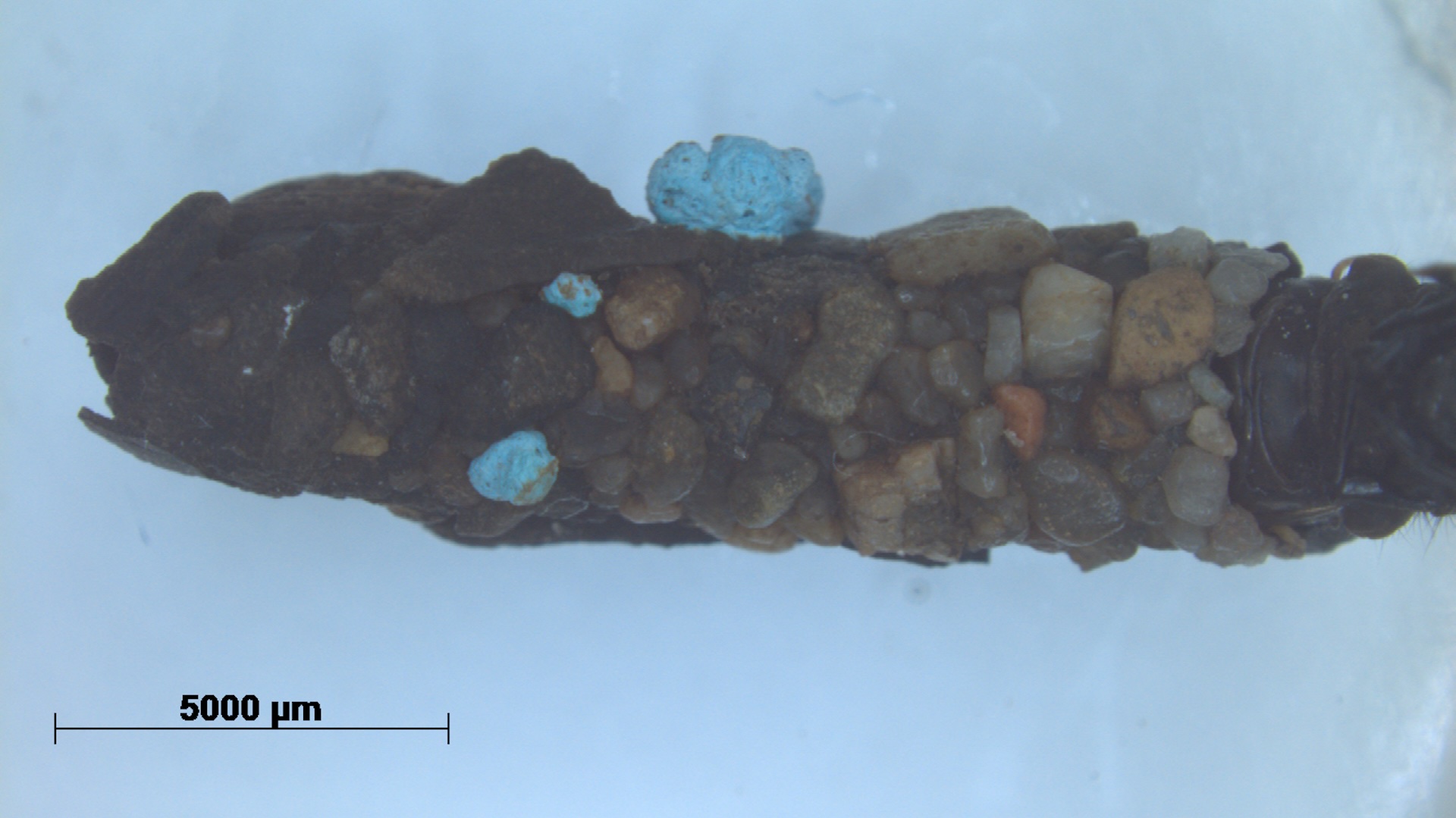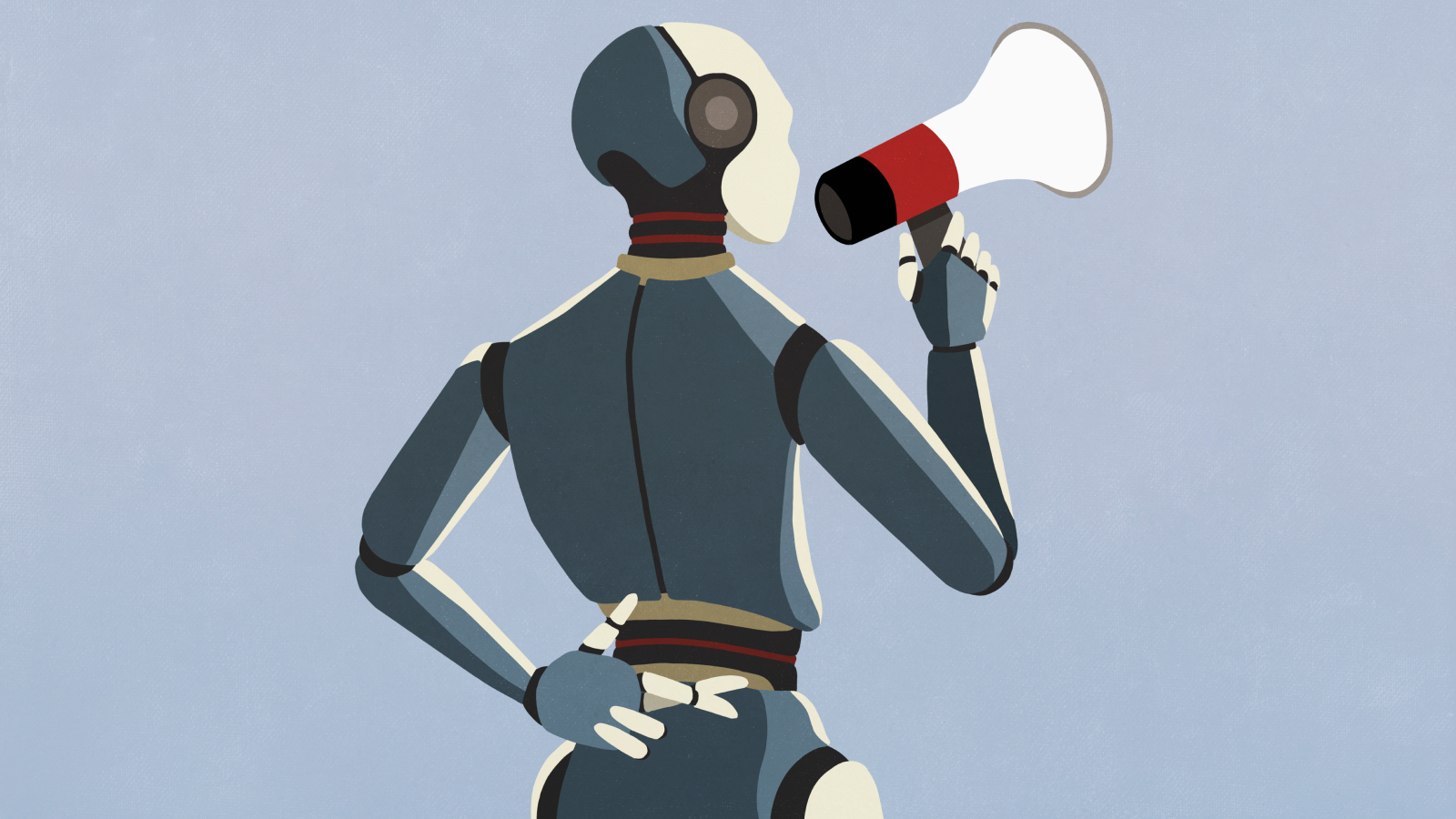Microplastics have been in 'pristine streams' for half a century — what could that mean for human health?
New research shows that microplastics have been contaminating some freshwater streams decades earlier than previously recorded. What could that mean for human health?

Microplastic pollution from industrial waste has been contaminating freshwater ecosystems for decades, with evidence pointing to this run-off starting in the 1950s to 1970s. Now, though, new evidence suggests the extent of that pollution might be even broader than once thought.
In a study published April 25 in the journal Science of The Total Environment, scientists examined the larvae of caddisflies, small insects that build protective casings around themselves using plant material, sand and small stones in their environment. These casings, gathered in the 1970s and 1980s, came from clear, spring-fed streams in the Netherlands that were considered pristine at the time.
However, the study revealed that the larvae were incorporating plastic particles into their protective casings as early as 1971 — in other words, microplastics had infiltrated even these seemingly untouched ecosystems.
"The inclusion of plastic in the casing of a caddisfly means plastic is entering the food chain," said lead study author Auke-Florian Hiemstra, a doctoral candidate in evolutionary ecology at the Naturalis Biodiversity Center.
"Many birds and fish eat these caddisfly larvae, and some swallow them including their casing," Hiemstra told Live Science in an email. "If caddisflies have been affected by microplastics for over half a century, that means the broader ecosystem is affected too."
The casing specimens in the study are part of the natural history collections at the Naturalis Biodiversity Center in the Netherlands. The researchers used a technique called energy dispersive X-ray analysis to reveal chemical elements and additives commonly associated with plastics inside the casings.
Get the world’s most fascinating discoveries delivered straight to your inbox.
This provided a rare snapshot into the impact of microplastics on freshwater systems, which represent less than 4% of current studies on microplastics, Hiemstra said. Generally, the presence of microplastics in the 2000s is well documented, but the historical timeline of microplastic pollution has remained vague. This lack of historical data has made it difficult to assess how long ecosystems and human populations have been exposed to microplastics, thus complicating risk assessments and epidemiological studies.
So, how might this study change our understanding of the history of microplastic exposure and its potential impacts on human health?
Microplastics in nature and the body

Microplastics are tiny fragments of synthetic polymers that can take anywhere from hundreds to thousands of years to degrade. They're defined as being between 1 micrometer and 5 millimeters long. Today, they seem to be found virtually everywhere: in clouds, the air we breathe, food, drinking water, and human blood and breast milk. These particles stem from the breakdown of larger plastics, and in some cases, they are intentionally manufactured for use in certain cosmetics and cleaning products.
Research suggests that the human body clears out some larger microplastics measuring up to 150 micrometers long, while fragments smaller than 10 micrometers may be absorbed into tissues. But recent research suggests that some plastics in our bodies are even tinier than that.
While what qualifies as "nanoplastic" is still under debate, these ultrasmall particles are typically considered to be any plastic fragments smaller than 1 micrometer (or 1,000 nanometers) in diameter. A human hair, by comparison, is around 80,000 nanometers wide. Nanoplastics are small enough to potentially pass through cell membranes, studies suggest.
Matthew Campen, a toxicologist at the University of New Mexico, recently led a study that pointed to the presence of nanoplastics in human tissues. Using advanced, high-resolution imaging techniques, his team identified plastic fragments measuring no more than 200 nanometers in length — thin enough that they were translucent — in brain tissue from a few dozen organ donors.
After its publication, some of the analytical techniques used in the study were criticized, so the exact quantities of different types of plastic may be off, experts told Live Science. But by detecting nanoplastics, the findings expand upon previous work that relied on microscopes that could only detect particles up to 25 times larger.
That study, which included samples collected between 2016 and 2024, also suggested that later samples carried higher concentrations of plastics, and that the brains of individuals who died with dementia contained more plastic than healthy brains. These results raised questions about whether the public's plastic exposure has been increasing over time.
Hiemstra's new findings feed into that broader discussion and may have implications for how we understand the health risks of microplastics. If the pollutants have been present throughout the environment — not only near industrial sites — since the 1970s, that might reframe our understanding of where people have been exposed and for how long. Plastics not only accumulate in the environment, but also in the body, so better understanding the timeline and extent of exposure can help scientists unpack its long-term health outcomes.
As Hiemstra's study was focused on only the Netherlands, though, other work will need to be done to understand the history of microplastic pollution on a global scale.
What do microplastics do to our bodies?
Scientists are still working to understand exactly how microplastics and the chemicals within plastics — such as phthalates and per- and polyfluoroalkyl substances (PFAS) — might affect our bodies, Tracey Woodruff, a professor at the University of California, San Francisco (UCSF) who studies how pollutants affect reproductive and developmental health, told Live Science.
Early research has linked plastic exposure to the risk of various health conditions, including heart disease, lung disorders, cancer and Alzheimer's disease. In each of these cases, the link is correlative, so it's not clear if or how the plastics might be contributing to the diseases. In addition, in lab-dish studies, some types of plastics appear to be relatively harmless, while others have been shown to kill human cells in vitro.
In 2024, Woodruff and her team at UCSF's Program on Reproductive Health and the Environment published a systematic review of nearly 2,000 studies on the health effects of microplastics as part of a California state-commissioned report aimed at guiding policy decisions. The review identified potential health effects on respiratory, digestive and reproductive health, and particularly on sperm.
"While a link between chemicals in plastics and chronic diseases is clear, it's hard to separate the effects of the microplastic from its chemical additives," Woodruff noted.
Our understanding of the potential harms of microplastic exposure is very preliminary at this stage.
Bernardo Lemos, University of Arizona and the Harvard T.H. Chan School of Public Health
She added that, "with rising cancer rates among younger people and increasing exposure [to microplastics] from early life, the potential long-term health risks — especially for those exposed in utero — remain a major concern," Woodruff said. Exposure to pollution is one of several competing theories for why the rates of certain cancers are rising in people under 50.
"More data will help address the uncertainty in the findings, but we're being exposed to [microplastics] right now, so it would be prudent to reduce exposures," Woodruff said.
While it's suspected that microplastics have negative impacts on human health, the World Health Organization emphasizes that the evidence for these effects is still limited and inconclusive.
"Our understanding of the potential harms of microplastic exposure is very preliminary at this stage," said Bernardo Lemos, a professor of pharmacology and toxicology at the University of Arizona and an adjunct professor of environmental epigenetics at the Harvard T.H. Chan School of Public Health. Lemos has led research to document the effects of microplastic exposure in humans and in model organisms, such as fruit flies, mice and fish.
"I am sure there will be many more studies documenting an abundance of microplastics in historical samples," Lemos told Live Science in an email. "It will be interesting to document how microplastics' abundance and quality change over decades." The Organisation for Economic Co-operation and Development, an intergovernmental organization, predicts that plastic production may triple by 2060.
Related: Humans inhale a staggering amount of microplastic every week. Here's where it ends up
Is it possible to avoid microplastics?

While Woodruff noted it would be prudent to reduce microplastic exposure, it's unclear what levels of micro- and nanoplastics we're realistically taking in on a daily basis. "Plastics can degrade into smaller fragments, but they persist, so we're going to be exposed to them for a very long time," Woodruff said.
She suggested that, at the individual level, people can reduce their exposure to microplastics and the chemicals in them by consuming fewer ultraprocessed foods, which are more likely to come into contact with plastic than whole or less-processed foods. She also suggested that it may help to avoid plastic containers, bottles and packaging where possible.
"There is still so little known about the history of microplastics," Hiemstra said. But thanks to collections that include specimens like the caddisfly casings, we may have unknowingly collected more evidence than we thought about the early days of this pollutant.
Other natural history collections around the world may harbor even older casings with microplastics, he suggested, highlighting the untapped value of such collections as tools for environmental science. They may offer a way to establish historical baselines of microplastic pollution, which are still largely missing from the record and could help us trace the true health impact of plastics.
This article is for informational purposes only and is not meant to offer medical advice.

Miriam Bergeret is a science writer and editor based in Toronto, Canada. Miriam holds a master's degree in laboratory medicine and pathobiology from the University of Toronto, where she also studied science journalism and communication. She has worked with research scientists, scientific journals, nonprofit organizations, research institutes, science magazines and more. Also a published knitting pattern designer, Miriam enjoys creating new outfits for her Italian Greyhound, Theo.
You must confirm your public display name before commenting
Please logout and then login again, you will then be prompted to enter your display name.
